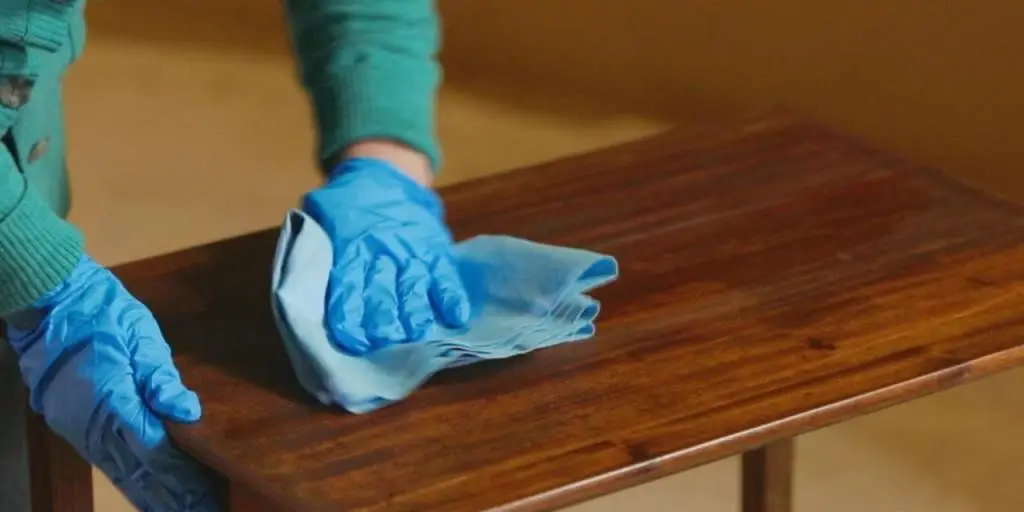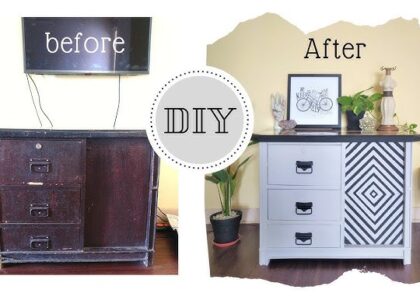Restoring furniture is a fun and useful hobby that lets you bring old pieces back to life. Whether you found a cool chair at a yard sale or want to fix up a family heirloom, the right techniques can make a big difference. This guide will help you learn how to assess, clean, repair, and refinish your furniture so it looks amazing again.
Key Takeaways
- Always start by checking the condition of your furniture to identify any damage or material types.
- Cleaning and prepping the surface is crucial before any restoration work.
- Sanding and repairing are important steps to ensure a smooth and stable surface.
- Choosing the right finish, whether stain or paint, protects and beautifies your piece.
- Regular maintenance helps keep your restored furniture looking great for years.
Assessing the Condition of Your Furniture
Before diving into any restoration project, it’s crucial to thoroughly assess the condition of your furniture. This initial step helps you understand the extent of the work needed and whether professional help might be necessary for more complex issues like structural repairs. Accurate identification is the first step in effectively addressing and resolving a problem.
Cleaning and Preparing Your Piece

Before diving into the restoration process, it’s crucial to clean and prepare your furniture properly. This step ensures that the subsequent restoration efforts yield the best results. Proper preparation can make or break your project.
Sanding and Repairing Techniques

Selecting the Right Sandpaper
Choosing the correct sandpaper is essential for a smooth finish. Start with a coarse grit to remove old finishes and imperfections, then move to finer grits for a polished surface. Always sand in the direction of the wood grain to avoid scratches. Here’s a quick guide:
| Grit Number | Use Case |
|---|---|
| 60-80 | Removing old finishes and rough surfaces |
| 100-150 | Smoothing surfaces and removing minor imperfections |
| 180-220 | Final sanding before applying finish |
Repairing Cracks and Chips
To fix cracks and chips, use wood filler that matches the color of your piece. Apply the filler with a putty knife, ensuring it’s packed in well. Once dry, sand the area smooth. For larger cracks, consider using wood glue and clamps to hold the pieces together while the glue dries. This method ensures a strong bond and a seamless repair.
Reinforcing Joints and Frames
Loose joints can make furniture wobbly and unsafe. Reinforce them by applying wood glue to the joints and clamping them until dry. For added strength, you can use screws or dowels. This step is crucial for maintaining the structural integrity of your furniture.
Adequate lighting is crucial for spotting imperfections during the refinishing process. Natural light or bright artificial lighting will help you see areas that need more attention.
By following these steps, you can ensure your furniture is well-prepared for the next stages of restoration, breathing new life into cherished pieces.
Refinishing and Protecting Your Furniture
Refinishing your furniture can breathe new life into old pieces, making them look fresh and new. Choosing the right finish is crucial to ensure the longevity and beauty of your furniture. Here are some steps to guide you through the process.
Applying Stains and Paints
Stains and paints can dramatically change the look of your furniture. When applying stains, always test on a small area first to see how the wood reacts. For paints, use a primer to ensure the paint adheres well and lasts longer.
Sealing and Protecting the Finish
After staining or painting, it’s essential to seal the finish to protect it from wear and tear. Use a clear coat like polyurethane or varnish. Apply multiple thin layers, sanding lightly between each coat for a smooth finish.
Choosing the Right Finish for Your Piece
Different finishes work better for different types of furniture. For example, a high-gloss finish might be perfect for a modern piece, while a matte finish could be better for a vintage look. Consider the style and use of the furniture when selecting your finish.
Refinishing not only revives furniture but also adds value to homes. It’s a rewarding process that can transform any piece into a cherished part of your decor.
Upholstery Restoration Tips
Restoring upholstery can breathe new life into your furniture, making it look fresh and new again. Here are some essential tips to help you get started.
Choosing Durable Fabrics
When selecting fabric for reupholstering, it’s important to choose materials that are both durable and aesthetically pleasing. Consider fabrics that can withstand daily wear and tear, especially if the furniture piece is frequently used. Bold patterns and dark colors can help hide stains and wear marks, making them ideal choices for high-traffic areas.
Basic Upholstery Techniques
Mastering basic upholstery techniques is crucial for a successful restoration. Start by removing the old fabric carefully, taking note of how it was attached. This will guide you when attaching the new fabric. Use a staple gun to secure the fabric tightly, ensuring there are no wrinkles or loose areas. For added comfort, consider adding a layer of batting between the fabric and the furniture frame.
Adding Decorative Elements
Adding decorative elements can enhance the overall look of your restored furniture. Consider using trim or piping to give a polished finish. Buttons and tufting can add a touch of elegance, while nailhead trim can provide a classic look. Be creative and let your personal style shine through in these final touches.
Upholstery restoration not only improves the appearance of your furniture but also extends its lifespan, making it a worthwhile investment.
Final Touches and Hardware Updates
Selecting New Hardware
Choosing the right hardware can make a huge difference in the final look of your restored furniture. New knobs, handles, or hinges can transform a piece from drab to fab. When selecting hardware, consider the style and period of the piece to ensure a cohesive look. For vintage pieces, you might want to visit specialty stores or online shops that offer period-appropriate hardware.
Polishing and Cleaning Metal Parts
Metal parts like handles, hinges, and decorative elements often need a bit of TLC. Use a metal polish to bring back their shine. If the metal is heavily tarnished, you might need to use a more abrasive cleaner first. Always test a small area to ensure the cleaner doesn’t damage the metal.
Adding Personal Touches
Adding personal touches can make your restored furniture truly unique. Consider lining drawers with decorative paper or adding a stencil design to a flat surface. These small details can make a big impact and give your piece a custom look. Personalization is key to making your furniture stand out.
The final touches are what make your restored furniture truly special. Take your time to choose the right hardware and add personal elements that reflect your style.
Maintaining Your Restored Furniture
Once you’ve put in the effort to restore your furniture, it’s essential to maintain it properly to ensure it stays in great condition for years to come. Regular maintenance not only preserves the beauty of your pieces but also extends their lifespan.
Regular Cleaning and Dusting
Dust your furniture regularly using a soft, lint-free cloth. Avoid feather dusters as they can scratch the surface. For deeper cleaning, use a mild dish soap diluted in water. Apply the solution sparingly to a cloth, not directly on the wood, and gently wipe the surface. Immediately dry with a separate soft cloth to prevent water damage.
Protecting Against Environmental Damage
Wood furniture is sensitive to environmental conditions. Direct sunlight can fade wood over time, and excessive humidity can cause warping. To protect your pieces, place furniture away from windows or adjust blinds to minimize sun exposure, and use a dehumidifier in humid climates.
Routine Inspections and Minor Repairs
Regularly inspect your furniture for any signs of wear or damage. Tighten loose screws and joints, and address any minor repairs promptly to prevent them from becoming major issues. Routine inspections can help you catch problems early, ensuring your furniture remains sturdy and beautiful.
Maintaining your restored furniture is a rewarding process that keeps your cherished pieces looking their best. With a little effort, you can enjoy the beauty and functionality of your furniture for many years.
By following these simple steps, you can ensure that your restored furniture continues to be a highlight in your home, adding both beauty and functionality to your living space.
Taking care of your restored furniture is key to keeping it looking great for years. Regular dusting and using the right cleaning products can make a big difference. For more tips and expert advice, visit our website today!
Conclusion
Furniture restoration is a wonderful way to bring old pieces back to life. It lets you keep a bit of history while adding your own touch. Whether you’re fixing up a family heirloom or a flea market find, the right techniques can make a big difference. Remember, the goal is not just to make the furniture look good, but also to make it last. With patience and care, you can turn any worn-out piece into a beautiful addition to your home. So, roll up your sleeves and enjoy the process of transforming your furniture!
Frequently Asked Questions
What is the first step in furniture restoration?
The first step is to assess the condition of the furniture. Check for any structural damage, identify the materials used, and evaluate the surface wear.
What tools do I need for furniture restoration?
Basic tools include sandpaper, screwdrivers, wood glue, clamps, and paintbrushes. Depending on the project, you might also need a sander, wood filler, and a chemical stripper.
How do I choose the right finish for my furniture?
The right finish depends on the type of wood and the look you want to achieve. Options include stains, paints, and clear sealants. Always test the finish on a small area first.
Can I restore upholstered furniture myself?
Yes, you can restore upholstered furniture. Start by choosing a durable fabric, then follow basic upholstery techniques. For more complex projects, you might want to consult a professional.
How do I maintain my restored furniture?
Regular cleaning and dusting are essential. Protect the furniture from direct sunlight and moisture, and perform routine inspections to catch any minor repairs early.
Is it necessary to strip old finishes before refinishing?
Stripping old finishes is often necessary to achieve a smooth, clean surface for the new finish. Use a chemical stripper or sandpaper to remove the old layers.






